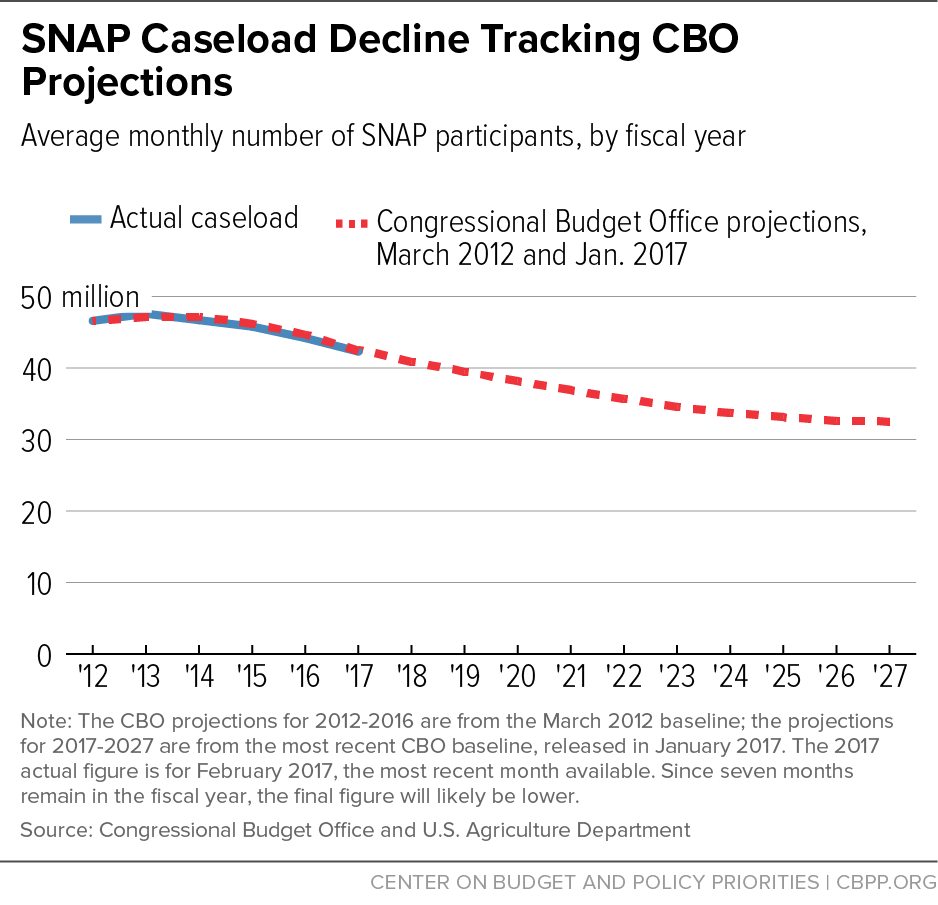BEYOND THE NUMBERS
President Trump’s new budget will reportedly cut SNAP (formerly food stamps) by $193 billion — 25 to 30 percent — over ten years and may justify the cut by claiming that SNAP caseloads and spending are higher than expected. They aren’t. SNAP caseloads and spending have fallen for more than four years at almost exactly the pace at which the Congressional Budget Office (CBO) projected.
SNAP grew significantly between 2007 and 2012 as the recession and lagging recovery led more low-income households to qualify and apply for help. Caseloads peaked in December 2012. The annual decline in SNAP participants since then has closely tracked CBO’s 2012 projections (see figure), as well as its more recent projections. For each year, CBO’s projections have been within 1 to 2 percentage points of the actual figures.
As we pointed out earlier this month, caseloads have dropped by 12 percent or 5.5 million people since peaking.
SNAP spending has also fallen for four straight years. Spending was 4.5 percent lower in the first seven months of fiscal year 2017 (which began last October) than over the same period last year and 15 percent lower than over the same period in 2013, when spending peaked. And these declines are in nominal, not inflation-adjusted, dollars.
To be sure, SNAP caseloads and spending remain higher than before the recession hit, but that’s not because of any new policies expanding SNAP eligibility. Instead, the main reason is that a higher share of eligible people are participating, including two groups that historically have had low participation: working households and seniors.
By 2027, CBO forecasts that the share of the population receiving SNAP will return close to 2007 levels, at about 9 percent.

